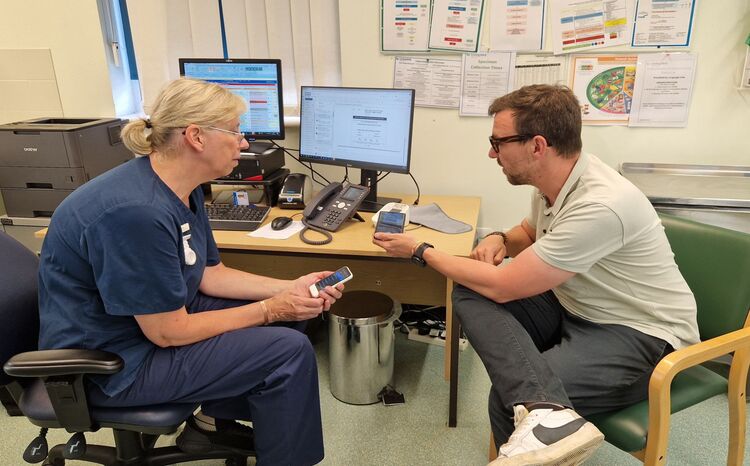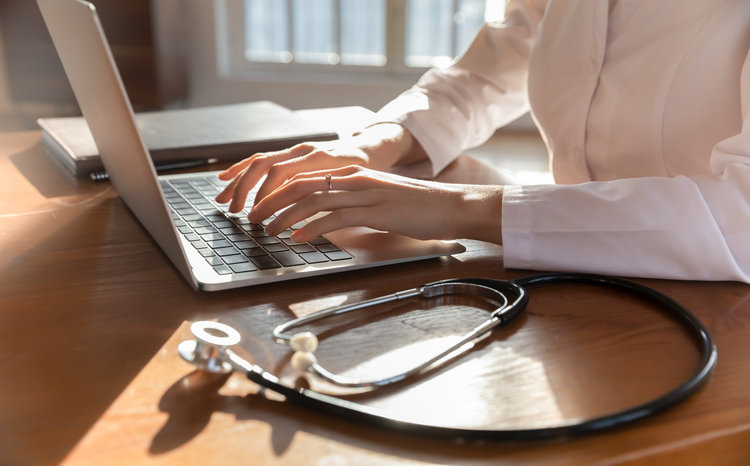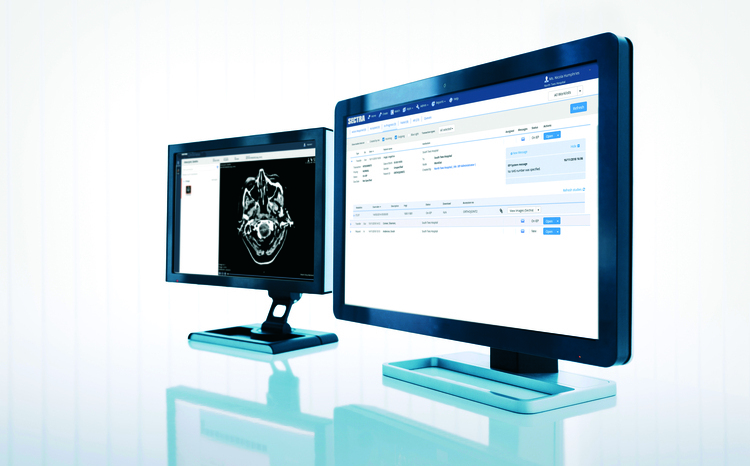Smartphone patient monitoring showcased
- 18 October 2007
Finland’s, eHIT, a specialist in healthcare software, has developed a new patient sensor and smartphone-based monitoring system, to deliver round-the-clock vital signs measurement.
The technology – which uses Bluetooth to connect patient sensors to a smartphone – has been backed by Finnish mobile phone giant Nokia and has been praised on the Forum Nokia website.
The company have termed the technology a ‘Personal Wellbeing’ solution that can be used to improve preventative care particularly in primary care as well as be used as a lifestyle and wellness monitor.
eHIT demonstrated the technology at London’s Symbian Mobile Phone exhibition in London this week and spoke to E-Health Europe.
Arto Holopainen, eHIT’s director of research and development, told E-Health Europe: “The Personal Wellbeing solution provide accurate information about number of several important health and wellbeing factors. These include muscle exercises, fitness development, blood pressure monitoring, blood glucose monitoring, post and pre-operative monitoring, asthma management, heart functions carried out at home, and so on.
 |
eHIT says the simple-to-use solution requires minimal user training and has the potential to help reduce care costs and provide better monitoring of patients suffering from long term conditions such as diabetes, muscle rehabilitation or heart problems
According to eHIT, the system allows anyone with a smartphone to take control of their healthcare, and if warning signs are noticed, messages can alert the user that they should see a doctor.
The solution combines biomedical sensors placed on the body with smartphone software that collects the data and transmits appropriate information to a clinician. Using Bluetooth communication the software automatically collects and transmits a patient’s data to a clinician if dangerous measurements are detected.
The solution utilises eHIT’s Health Gateway, a tool that transfers and analyses data from different measurement devices via both a mobile platform and wireless GSM/GPRS networks.
Holopainen explained how the system can also be used as a personal training and fitness advisor: “As a personal training guide, eHIT’s mobile personal wellbeing solution can monitor muscle exercises, daily activities, and fitness development information, displaying gathered data on mobile platform. The system can collect and report accurate information about personal fitness and detailed information on how to improve training and daily exercises.”
The company says its system is already being extensively used in Finland and interest has also been expressed in the Middle East and Asia.
Holopainen said the application will be welcomed in a fast-moving world where mobile phones have become an essential method of communication. “Most of us carry a mobile phone and use them fairly regularly. Lifestyle disease is a real problem worldwide, and increasingly we are seeing an ageing society. By using smartphones to aid healthcare, there is no need for user training. The patient just needs to upload the application and apply the sensors and the devices take control of self-care wirelessly.”
“This is real-time correct accurate measurements which will help to promote prevention and not intervention, vital particularly in primary care. Overall, it should help to reduce care costs and provide patients with a bigger picture, particularly if they suffer from a long term condition such as diabetes, muscle rehabilitation or heart problems,” said Holopainen.
He added: “The application simply ruins in the background, receives information, and maps it to a series of commands, which determine whether further treatment is necessary. The obvious problem is Bluetooth connectivity and power consumption, but these are rarely issues for most users with a good quality smartphone.”
The technology was recently used to ensure the health and wellbeing of competitors in the Ironman Germany 2007 triathlon and Holopainen says the technology has significant growth potential.
“As smartphone technology gets more and more hi-tech in its specifications and features, the ability to utilise these tools to improve healthcare is of great interest to us. We helped create the Nokia phones compatible with DICOM standards for imaging and this sensor technology is just the next step in what we hope will be a fruitful exploration of integrating health and mobile technology.”
Links
Joe Fernandez




